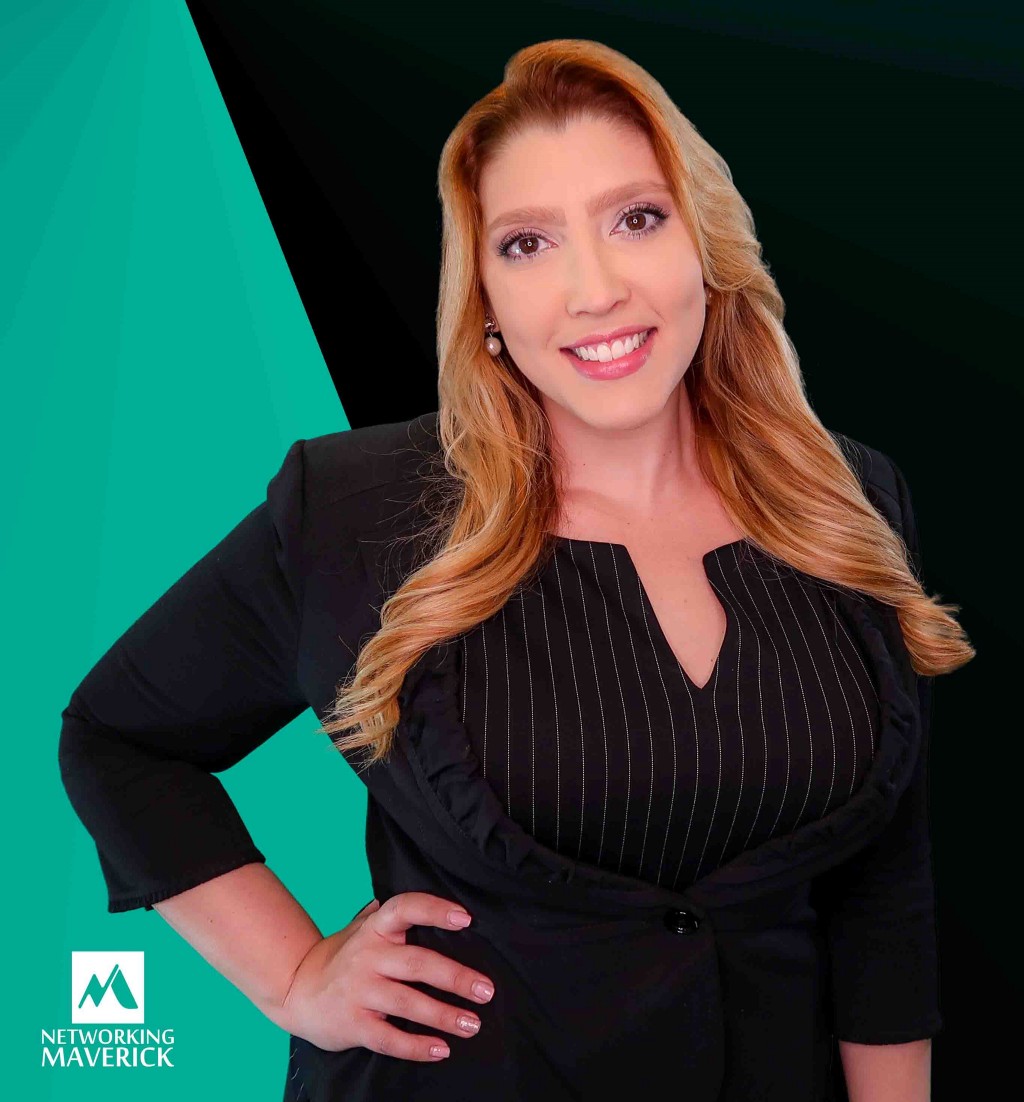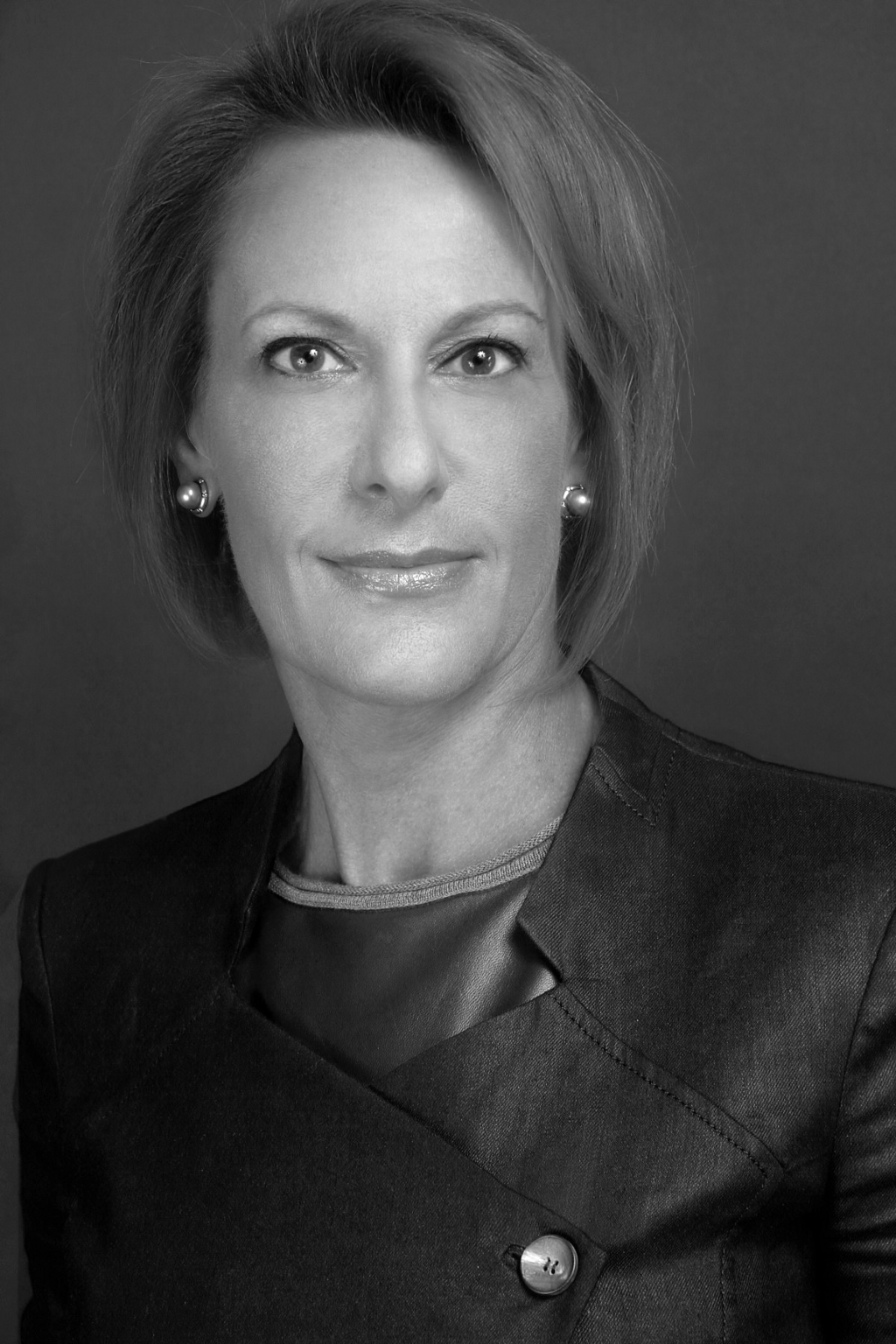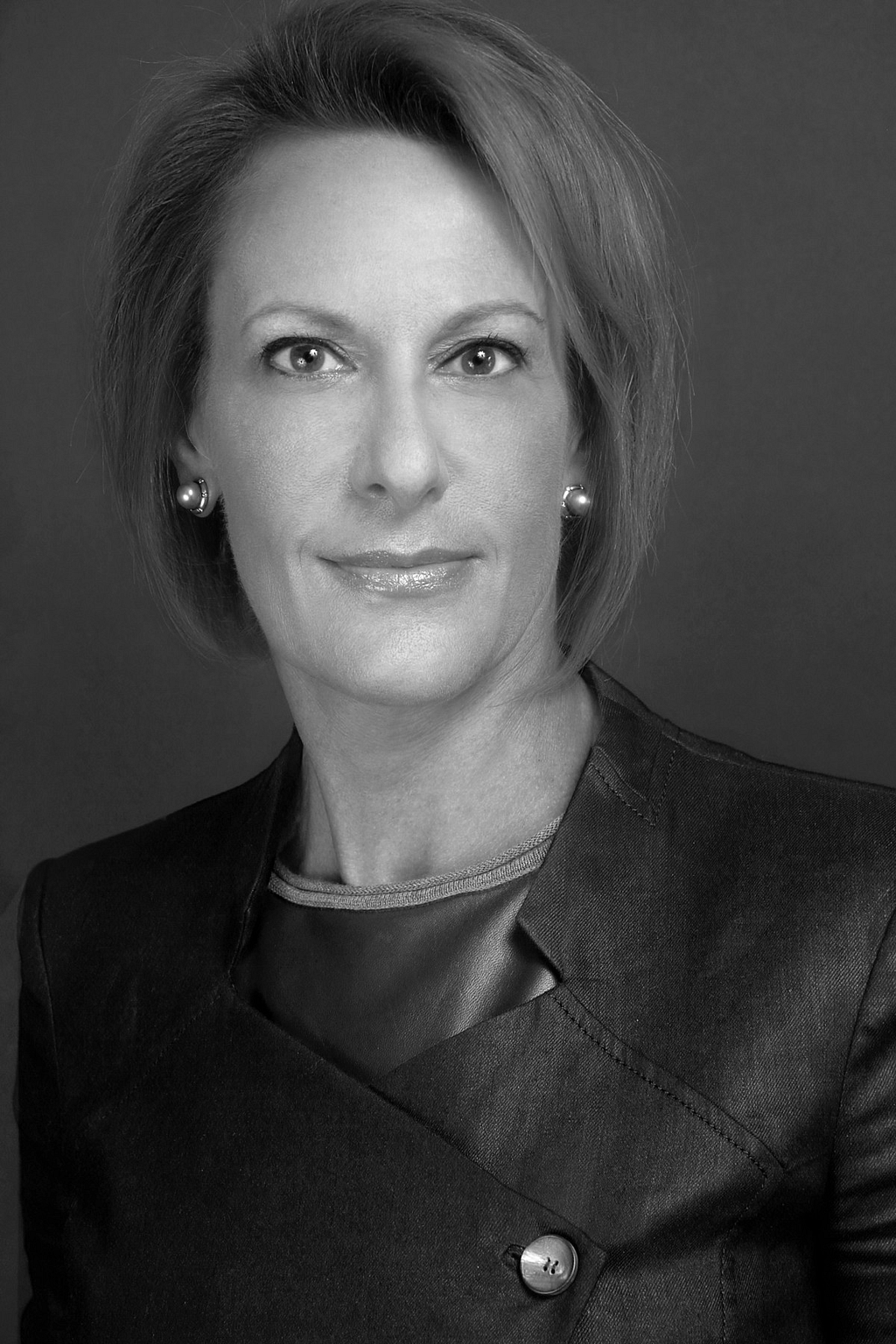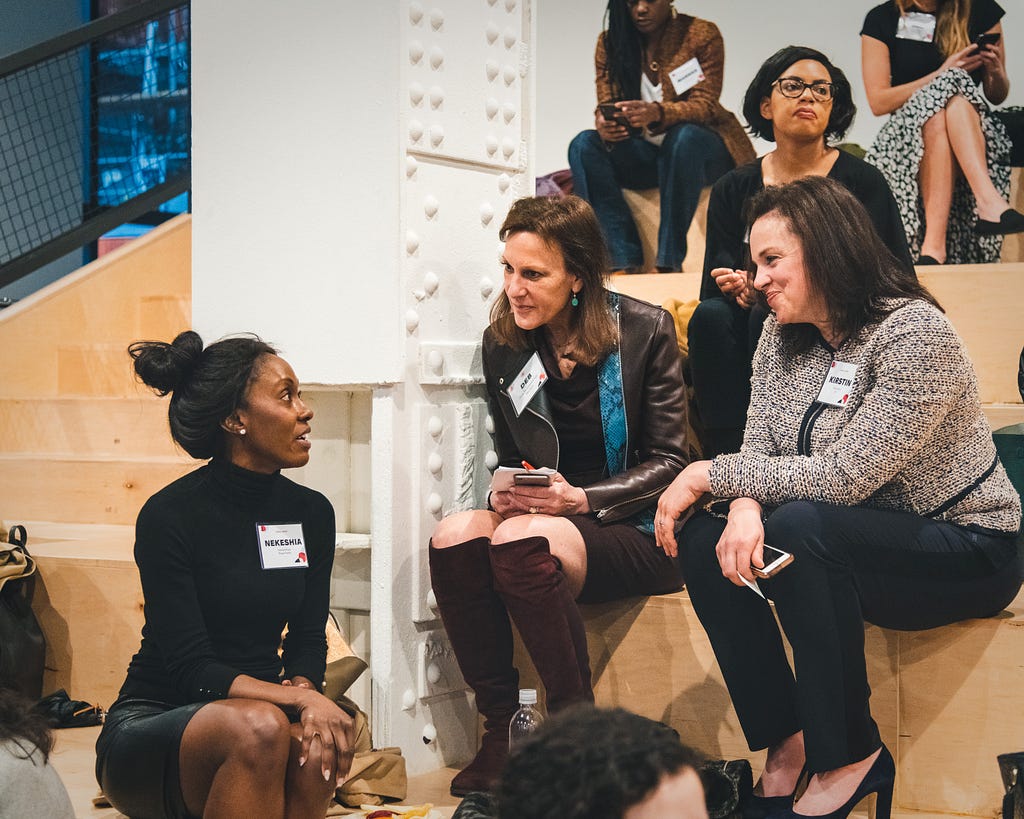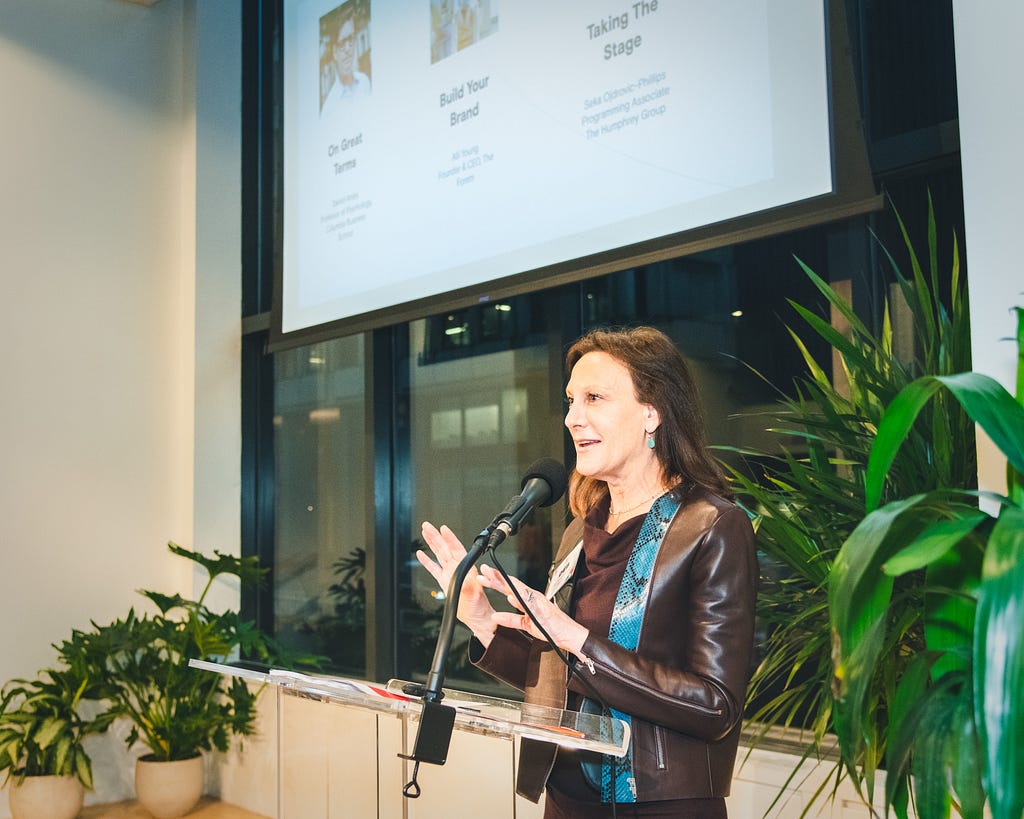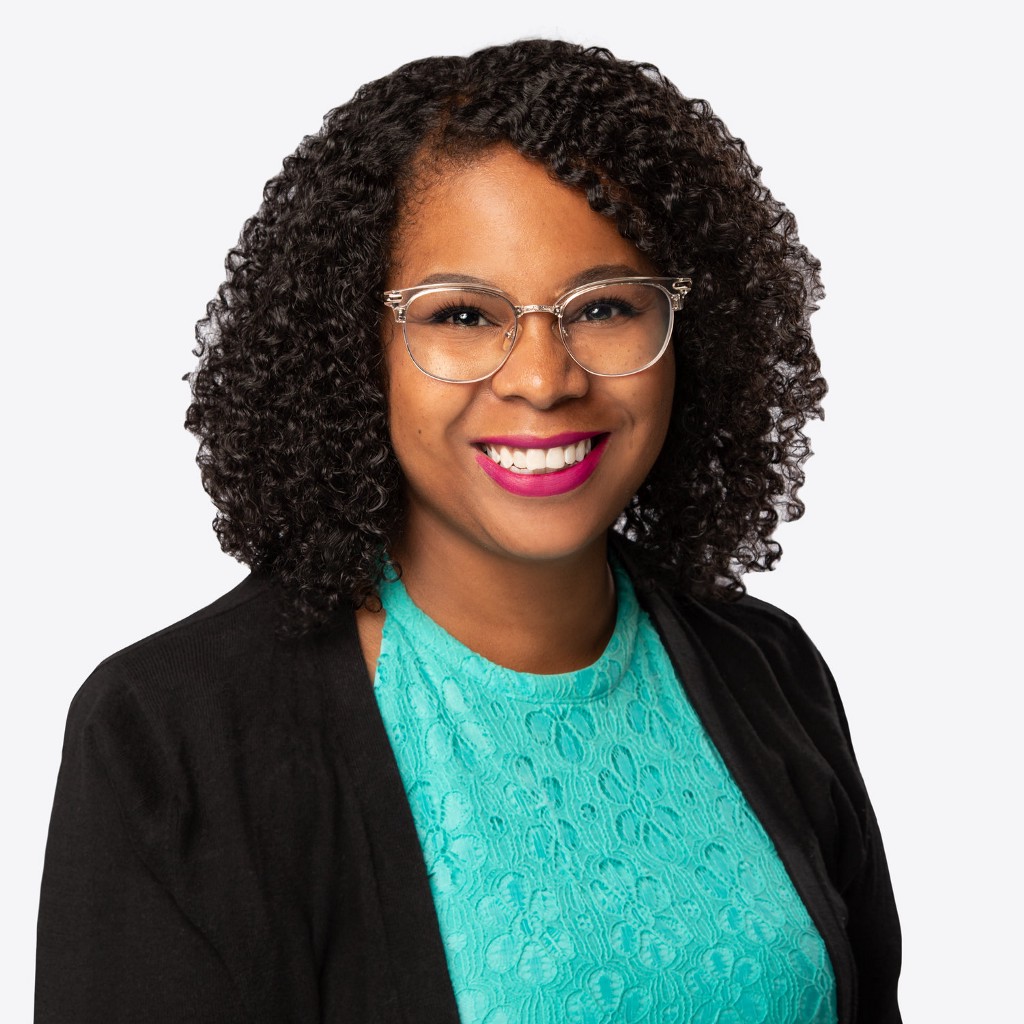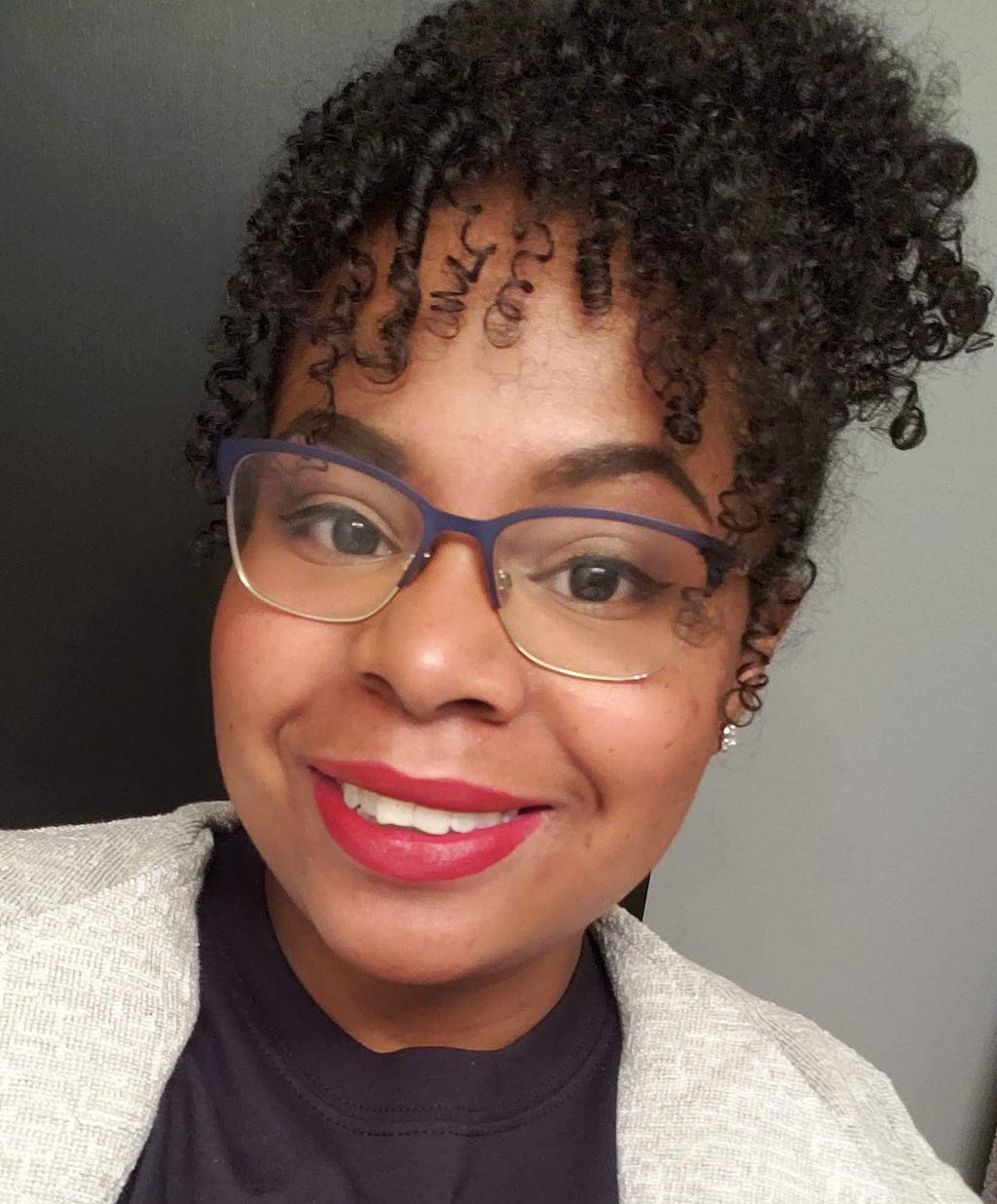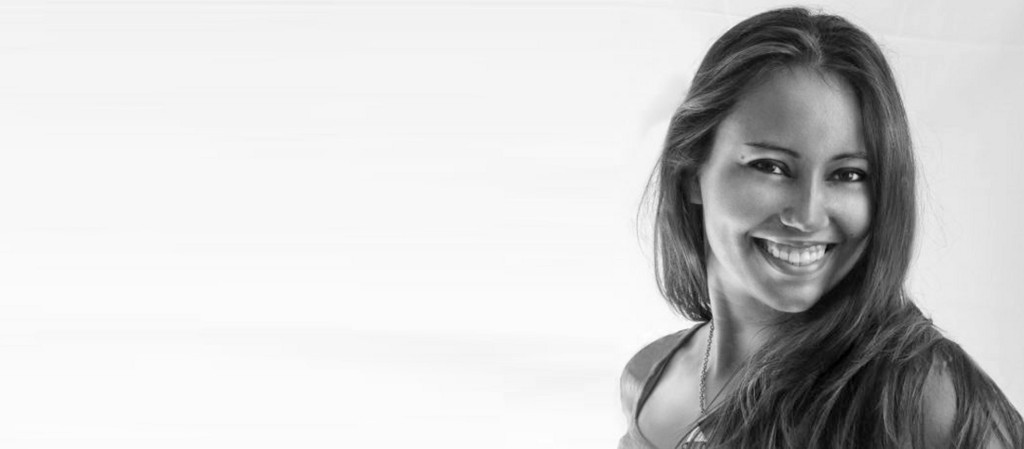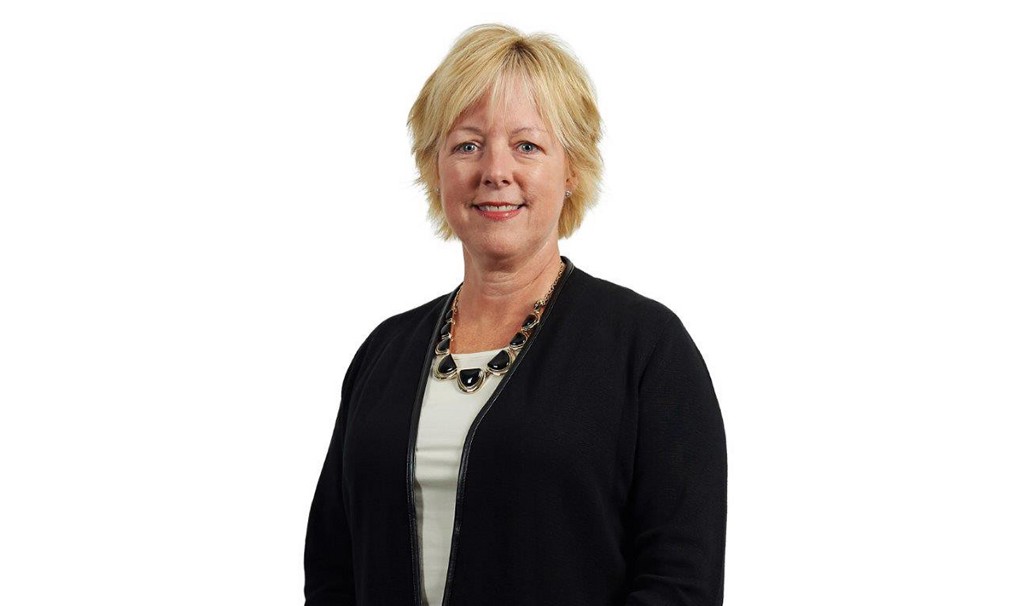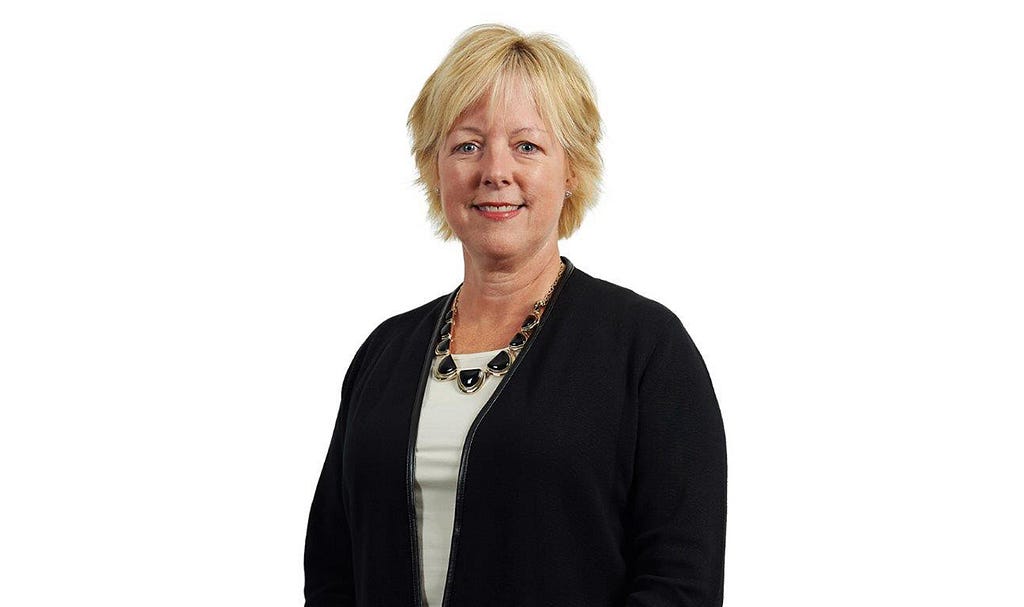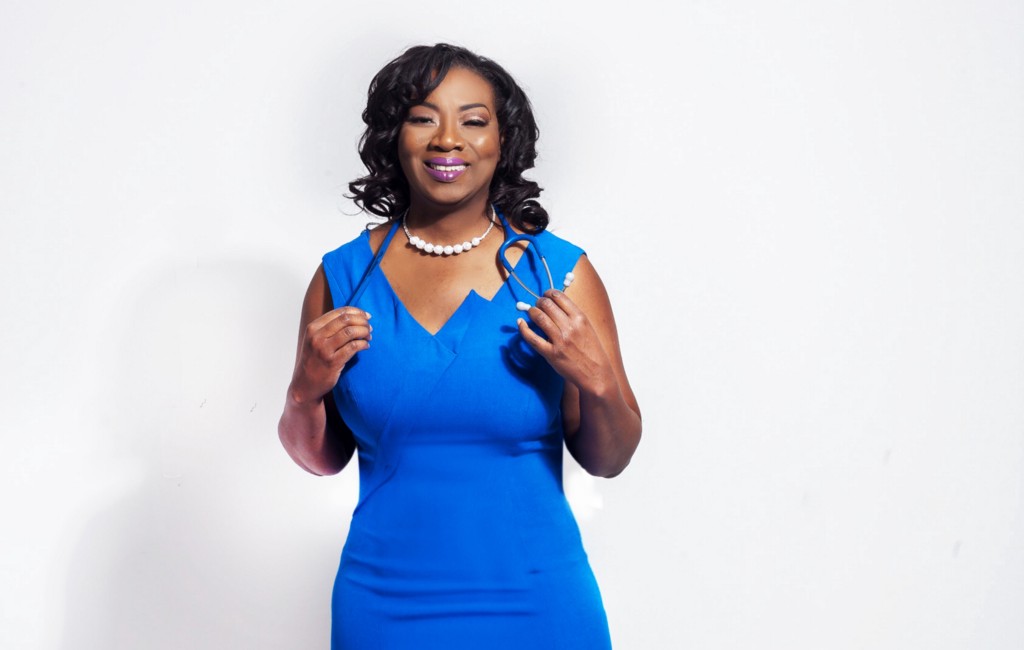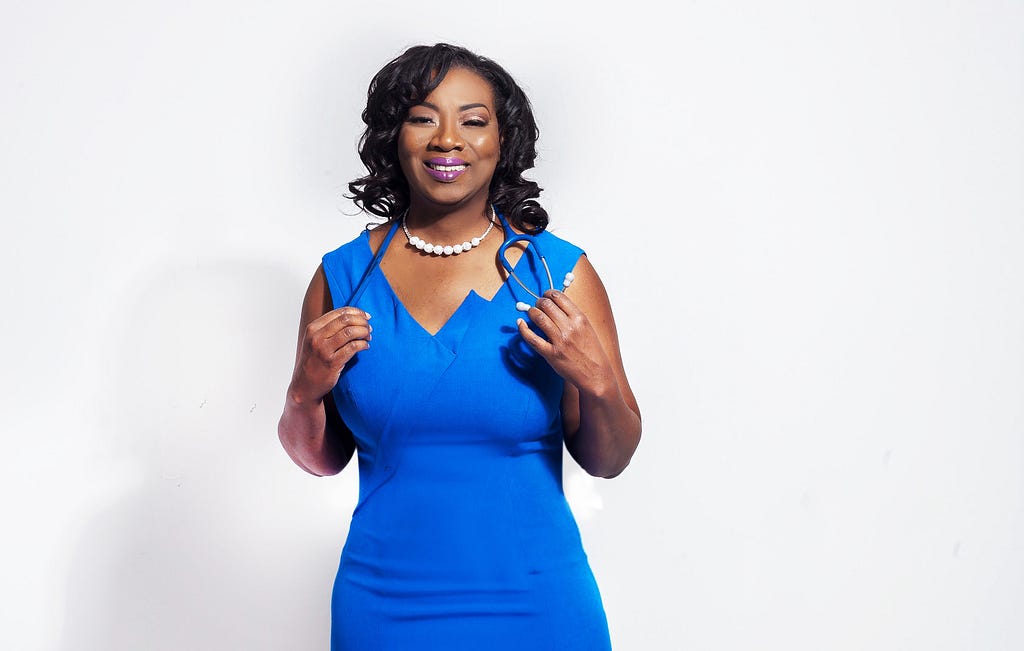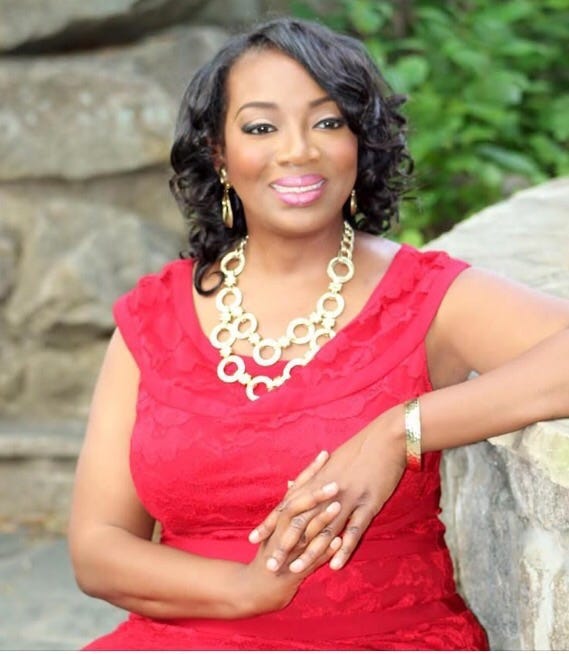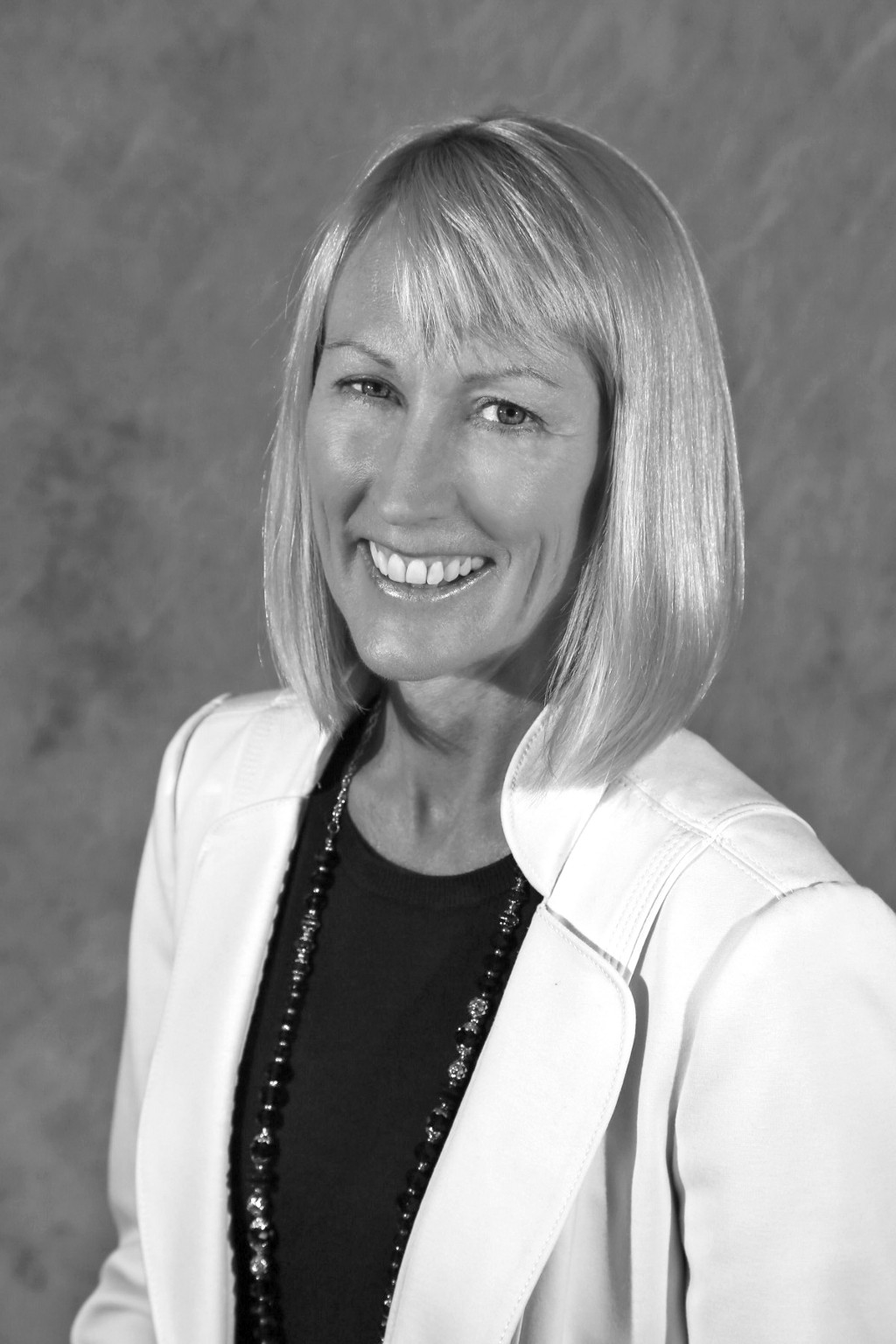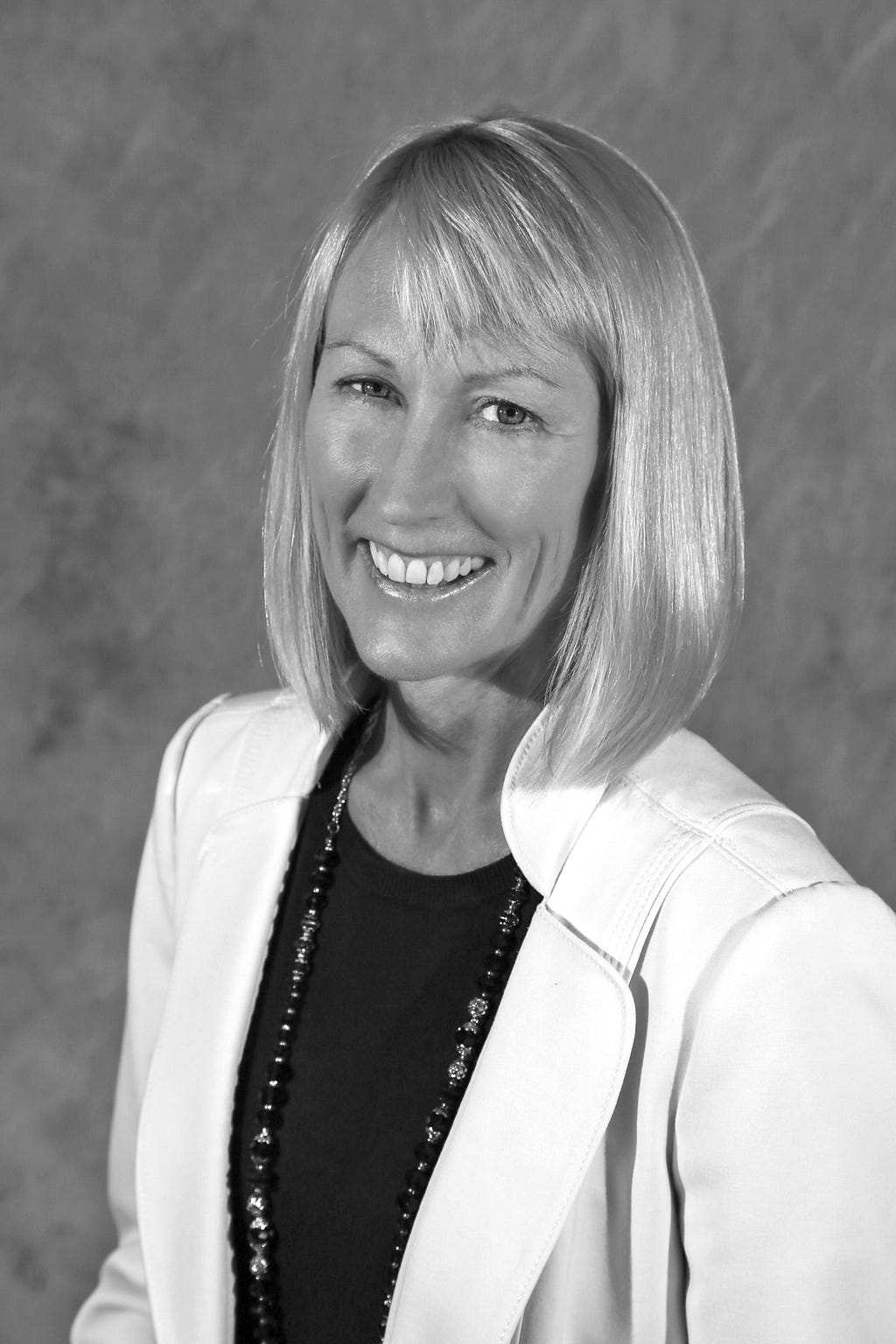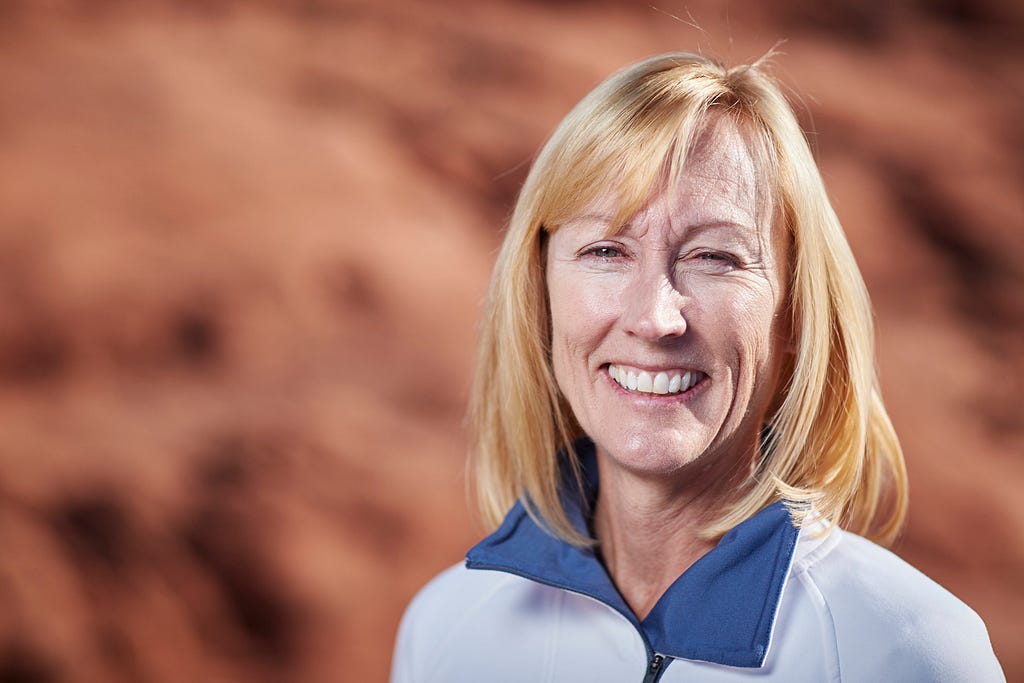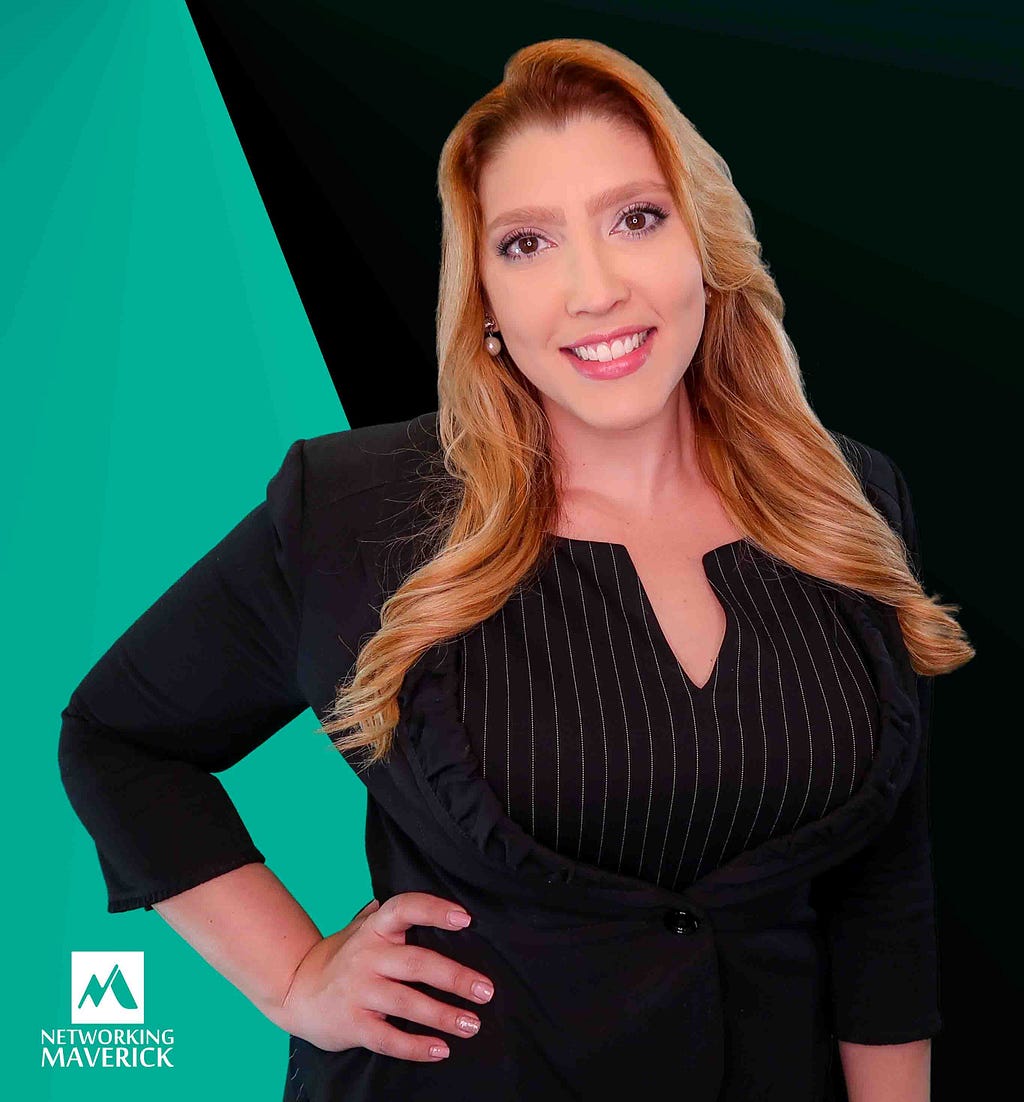
Another way is by shifting what we see and hear in the media. Rather than reinforcing stereotypes, we can include women and other underrepresented groups on screen, in the writing room, on the decision-making boards of big media outlets, and out in the field connecting with the average person. It’s the subconscious we need to retrain. This is where our unconscious biases and decisions come from and where we need to focus our attention.
As part of my series about “the five things we need to do to close the gender wage gap” I had the pleasure of interviewing Lauren Marsicano, Esq. Lauren is the founding partner of Miami-based boutique law firm Marsicano + Leyva PLLC and has worked with global Fortune 100 companies like Bank of America. Outside of her law practice, she is the founder of the Networking Maverick community where she helps her clients build relationships to turn their network into net-worth, and recently, she created the online program “7 Steps to Startup Success” where she guides small business owners through the basic legal strategies to protect and build their businesses into Simple 6-Figure Startups. Lauren has been recognized by the American Bar Association as a “Top 40 under 40 Lawyer in the Nation” and a “2019 Florida Super Lawyer, Rising Star.” She has also been a speaker for Business Networking International Miami, Miami Under 40, and the American Bar Association. She received her law degree from the University of Miami School of Law and has studied under some of the best legal minds at Oxford University.
Thank you so much for joining us! Can you tell us the “backstory” that brought you to this career path?
Thank you so much for having me! Growing up, I moved around the world over 15 times because of my father’s career in hotel management. Living in hotels was very exciting (maybe not as fun as “The Suite Life of Zack & Cody” made it seem though) but being the “new girl” all the time was rough. Add on the fact that I developed curves at a young age, and it was a recipe for disaster. I was constantly bullied through my formative years and even into high school, which led to some very dark and depressing times inside myself, even though by all other standards I was living a great life.
Working through the negatives was extremely tough at times, but I firmly believe it was those experiences that gave me my “superpower”, keeping up the PMA (Positive Mental Attitude as my family calls it). Positivity and resilience in the face of adversity is a learned skill that many haven’t been able to develop, and that lack of confidence can be debilitating in so many aspects of our lives and careers, especially for female entrepreneurs. I realized that my passion was to educate and empower people to take ownership of their lives and create businesses from their passions. I started doing that when I co-founded my law firm, and it is that same passion that motivated me to create the Networking Maverick community. Now, I’ll be expanding these passions through monthly masterminds and online eCourses, which I am extremely excited about.
Can you share the most interesting story that happened to you since you began this career?
There are so many stories that come to mind! I would say my favorite memory was the day that we realized we made six figures our first year after forming our law firm. My business partner and I were both terrified as it was the first business for both of us and we got a lot of “haters” that told us we would fail. It causes those negative thoughts to creep back in, and even though my PMA (and networking) kept me going, you never really know until you see it in black and white. I remember we both teared up with a mix of excitement and relief. We had made the right decision and chosen the right path. We had started to build our dream. There’s almost no better feeling than that (at least career-wise). This is the kind of feeling I want to bring to every entrepreneur, especially female business owners. There are so many outside forces telling us we can’t or shouldn’t. Telling us that we should focus on building a family rather than building a business. I want to shift that conversation and focus on helping women follow their passions and turn them into a profitable business. That is what drove me to start the Networking Maverick Community, and now I’ll be providing female entrepreneurs with even more practical tools and resources for simple six-figure startups through my eCourses.
Can you share a story about the funniest or most interesting mistake you made when you were first starting? Can you tell us what lesson you learned from that?
When we were in the pre-launch phase, one of the last things we did was try to solidify the logo for branding purposes. Being the “creative” one between the two of us, I decided to doodle the logo myself, which resulted in what looked like two stick figures dancing and not the M + L I had imagined. My assumptions and art skills were slightly overestimated to say the least! That’s when we decided an expert was a better choice, but I had NO idea logos can cost thousands of dollars and take countless hours to create and tweak (and that’s if you get a good designer that also can help with branding).
I learned so much about several different industries just to be able to get a better picture of what it would take to create a brand, and even though I can teach it now, I will always delegate those tasks and invest in the right professionals. You get what you pay for! Google can only teach you so much. This happens to many entrepreneurs. We try to wear all hats and Google our way through tasks that are better to either outsource to professionals (like graphic designers, marketing agencies, accountants, or lawyers) or to invest in actual, paid educational tools and resources. You have to invest in yourself and your business in order to have the proper foundations of success, and even if you can’t afford the top dollar professionals in all aspects, you can budget, plan, outsource, and automate many tasks at reasonable prices or you will have to spend the time and money it takes to invest in real educational tools and resources to truly understand these specialized areas.
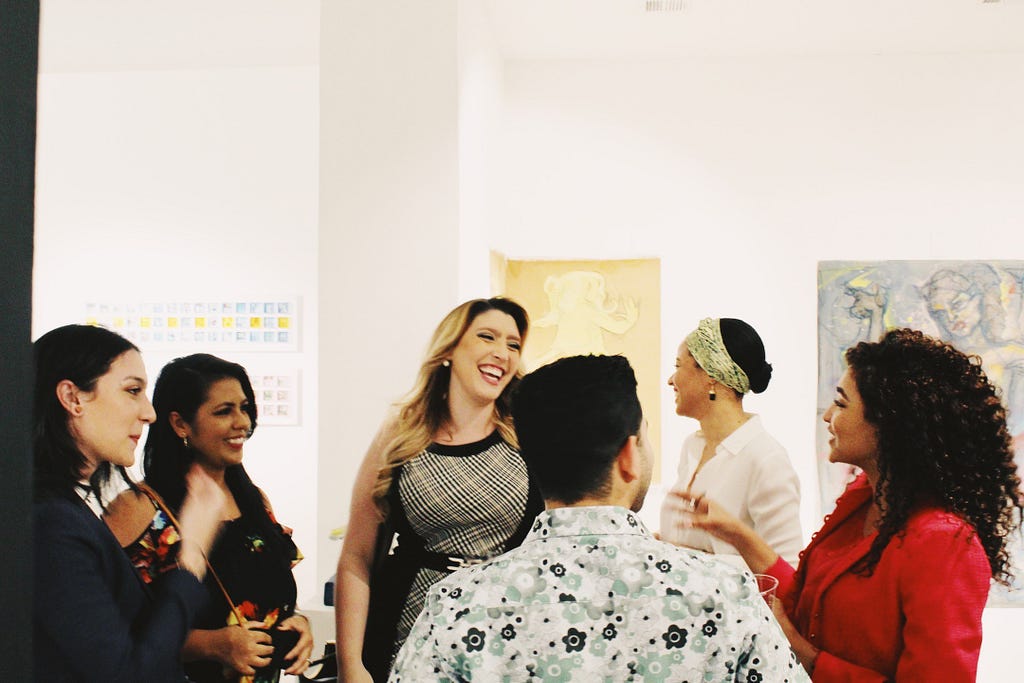
Ok let’s jump to the main focus of our interview. Even in 2019, women still earn about 80 cents for every dollar a man makes. Can you explain three of the main factors that are causing the wage gap?
I think it boils down to three issues: 1) What’s been called the “Motherhood penalty”, 2) Lack of wage transparency, and 3) Social pressure.
I was first exposed to the “Motherhood penalty” in college during my economics course. Mandatory paid leave has been a recommendation of many organizations and public institutions since the President’s Commission on the Status of Women formed by President Kennedy (in 1963). But we all know that the US is still one of the only “wealthy nations” not to have such a policy (the average is 18 months in other countries, by the way). Despite there being no mandatory paid leave, businesses and executives still complain about the 12-week mandatory unpaid leave and cite it as a reason why women should earn less. Think about that. The fact that you are a woman, regardless of your desires or plans to have or not have children, will cost you money because your womanhood means that you may, at some point, have the audacity to birth life and take unpaid time off. This is true even for women that do not want kids or women that physically cannot carry a child. I’ve seen this firsthand in law firms where women go on maternity leave only to come back to resentment and skepticism. Sometimes, they are purposely given poorer cases because partners fear they are not as reliable anymore or won’t put in the hours required. This gender bias is present even subconsciously with other women executives! When you see a more feminine name on a resume, the candidate is perceived completely different than if the name was more masculine or gender neutral. And the real kicker for me is that men that have families are actually rewarded in the workplace. They are perceived as stable and mature, and they are more likely to be given job opportunities and flexible work schedules relative to their female colleagues. This bias also occurs when asking for raises or bonuses, which brings me to №2.
Knowledge is power! The lack of wage transparency prevents women from properly negotiating fair salaries, raises, and bonuses. Giving women confidence and strategies to ask for their raise is a focus of Sheryl Sandberg’s “Lean In”, which I loved. But even when women might want to ask for that raise, it’s harder to do so without practical, black and white figures. Salary talks are still taboo in many companies, and some even have policies against discussing it (which may often be illegal). Without being armed with this knowledge, many women cannot ask for a fair salary at the inception, let alone ask for substantiated increases and bonuses during their careers. Increased transparency would at least arm women with the knowledge they need, should they gain the confidence to ask for that raise.
Then, of course, we still have those societal pressures that make women feel “less than” for not being married with kids by 30 or “mom guilt” for working and building an empire instead of spending time with their kids. Many successful and independent women I know are constantly asked “when are you getting married or having babies?” more than “when are you getting that C-suite position or launching that business?” I’m constantly asked when I’m starting a family, especially now that I’m engaged, but I’m focused on my businesses and not even thinking about starting a family anytime soon. The average millionaire has 10 streams of income, often one is from a business they either helped launch or build, but if women are perceived and constantly given external pressure for building a business rather than a family, how can they hope to achieve that 7-figure status? In recent years, many women who felt pressured to leave their jobs and careers to have their family actually started launching successful online businesses (think Etsy or Amazon shops). But now, they are plagued by the constant “mom guilt” pressure of being the main caregiver rather than the main breadwinner. The women that do overcome this guilt and have the family “buy-in” to their business success are the ones making their dreams a reality! I recently spoke to Ashley Mompreneur and I loved the tip she used to get past the guilt: She links her work success to trips for the kids! Now every time she’s on the phone making deals happen, her kids cheer her on because they know it could mean their next trip to Disney World. I think that is such an amazing technique to use that any stay at home mompreneur can utilize.
As I said earlier, knowledge is power, and I believe that if we, as a community, provide women with genuine support networks that motivate as well as mentor and educate (the true keys to success), then we can truly empower women and shift the societal norms.
Can you share with our readers what your work is doing to help close the gender wage gap?
My main focus, with both the law firm and the Networking Maverick community, is to help female entrepreneurs build and protect what I call their “Queendoms.” Lauren Marsicano, Esq. helps them by trying to provide quality legal services at a great value, and Lauren the Networking Maverick provides free education and empowerment on Instagram and YouTube and at events so that women feel confident to take big risks and go against the norms (like a maverick). And I love mentoring other women along with providing free tips and tools on social media. My online school, Simple 6-Figure Startup, will be the last piece that bridges the gap in the market between cheap, low-quality contracts and high-priced legal services. With the inaugural course, 7 Steps to Startup Success, I’ll be educating female entrepreneurs on their way to start their businesses with a proper legal foundation and walking them through the purpose behind the legal contracts they need. That way, they’ll understand the substance that they need to add and can then edit themselves in the future. I know this will allow women to overcome self-doubt and insecurities they might have (much like I had to overcome throughout my journey) and empower them to turn their passions into businesses, or at least empower them to ask for that raise! I also believe that, by constantly releasing more content and appearing on more stage and panels, and encouraging more and more women to also share their stories and knowledge, we can become a wave of empowerment and positivity and light that washes away the old mentalities and negativity and biases currently preventing us from reaching that equal paycheck and breaking the glass ceiling.
*Can you recommend 5 things that need to be done on a broader societal level to close the gender wage gap. Please share a story or example for each.
I think it all boils down to changing the social norms.
Small shifts make a BIG difference. Especially shifts in how we talk or treat women that choose to delay or forego the “traditional” family model. For instance, I heard an amazing idea recently from a couple different sources. Let’s start having business warming parties to celebrate female entrepreneurs! Similar to an expecting parents receiving gifts during a baby shower or newlywed home owners getting house warming presents, this will reward these amazing women for choosing this path, give them the resources they need to start out their journey, and allow everyone (friends and family) to “buy-in” to the success of the venture.
Another way is by shifting what we see and hear in the media. Rather than reinforcing stereotypes, we can include women and other underrepresented groups on screen, in the writing room, on the decision-making boards of big media outlets, and out in the field connecting with the average person. It’s the subconscious we need to retrain. This is where our unconscious biases and decisions come from and where we need to focus our attention.
Having more women and minorities at the top of every major company would also help! And I don’t just mean one or two. I mean actually represented ON the boards. Change can sometimes come from grassroots efforts, but I am a firm believer that we need to see change at the top for bigger policy shifts to take place on a broader scope. Diverse companies produce 19% more revenue! That means our unique perspective should be valued at ALL levels. Once we have more “seats at the table” then policy shifts are bound to happen.
Collaboration over competition is another shift that needs to happen! I can’t stress that enough. I think women are pitted against each other because we’ve been taught there is a limited amount of pie or spots available for women, so we are trained to fight for that limited resource. In reality, we can focus on making the pie bigger by supporting each other and lifting each other up. Rising tides raise all ships! For me, this has been a foundational element of my business success that stems from building relationships. I constantly think about how I can add value to those I meet, and often it’s supporting their businesses or connecting them with other successful entrepreneurs. I think there’s room for all of us, and we only hurt ourselves (and our bank accounts) when we fight with each other.
Lastly, we need to stop the extreme behaviors that get highly publicized. Man-hating and extreme violence or aggression against men in general will get us nowhere. We need allies! Husbands like Henry Blackwell and James Mott, Congressmen like Thetus W. Sims, Fathers like Daniel Anthony, lawyers like Francis Minor, and wealthy sponsors like George Francis Train. These men and many more supported the women’s suffrage movement, and such influential and respected allies are vital for change today, just like it was back then. Let’s start including men in the conversation, supporting them when they try to do good for our cause, and stop vilifying them if their efforts sometimes fall short. I know that I would not be where I am without the support, encouragement, knowledge, and mentorship that I’ve received from the men in my life. Having a strong mother AND father working together giving me positive reinforcement and support was a main factor in my confidence and success today. My father was and still is one of my closest confidants and mentors (he’s help build-up multi-million dollar hotel brands around the world!), and he was the first one to teach me about networking and the importance of relationships from a very early age. The support and guidance of my soon-to-be husband is a large part of why I have been able to launch two (soon to be three) businesses in the last three years. He has been one of my biggest supporters and motivators on days where it all may seem impossible, which can still happen to us all. He has stepped up when I needed help with video editing, recording, and graphic design (areas that are not a part of his business or career). It was a male teacher that inspired me to learn more about history and debate that led me on my path to being a lawyer. It was a male teacher that mentored me and worked with me in order to attain my dream of studying law at Oxford University. I still have countless men in my life and on social media that are constantly helping spread my message and supporting the movement both on and offline. We are stronger and more able to effectuate change together. Feminism is about equality after all, and we need to build a community of support among all genders and races to truly make any lasting and meaningful change.
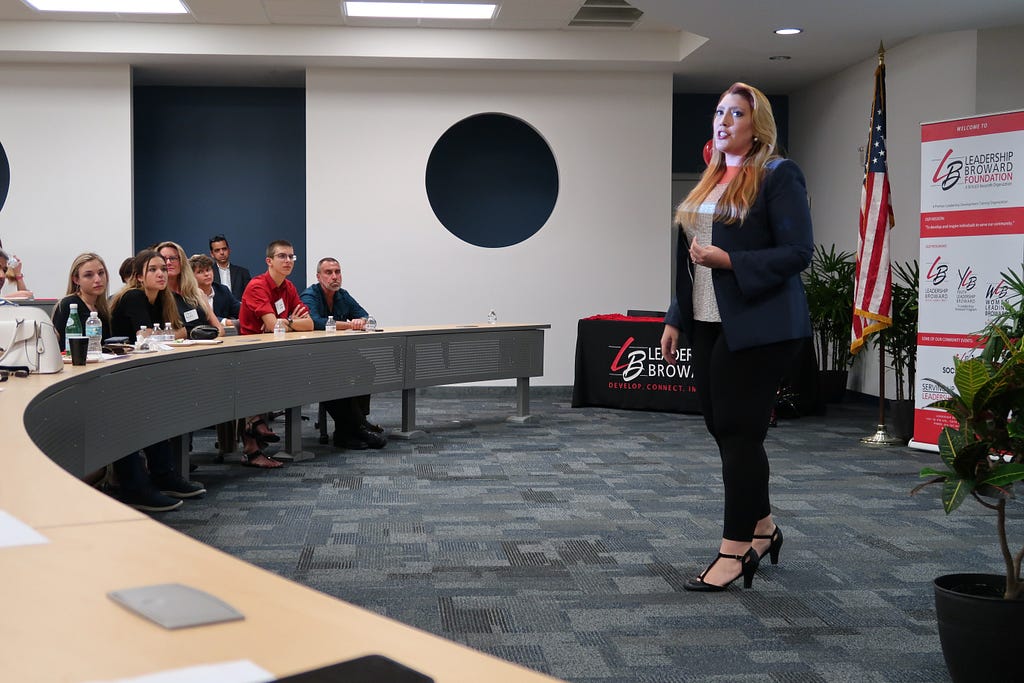
You are a person of great influence. If you could inspire a movement that would bring the most amount of good to the most amount of people, what would that be? You never know what your idea can trigger.
The business warming parties I mentioned earlier! That is a small, doable shift that can start TODAY. I really believe it is that type of idea that can have a large impact and really start changing the conversations around female business owners as well as how we subconsciously feel toward them. We need to find more ways of celebrating women entrepreneurs and flooding the media (across all platforms) with more and more of the behaviors that we would like to see and reinforce. Having and promoting a Positive Mental Attitude (PMA!) in the face of adversity or criticism when we don’t conform to society’s expectations and persevering even when you feel like quitting. Slowly moving away from traditional stereotypes and tropes and moving more toward what are currently unconventional values and traditions. Values shape our beliefs; beliefs shape our actions; actions shape our habits; habits are who we become. This is true both on an individual and societal level, and it will take hard work and getting very uncomfortable to break the old habits. If we inundate our community and families with new, positive messages that actions, eventually over time there will be no room for any more negative habits. And the first step we can take right now in this direction is to start throwing business warming parties.
Can you please give us your favorite “Life Lesson Quote”? Can you share how that was relevant to you in your life?
“Remember that guy that gave up? Neither does anyone else.” It’s something my mom and grandfather always used to say, and I think it really reinforced the idea that quitting is easy but achieving your goals takes time, effort, and commitment. There were so many times throughout my life I could have given up and given in to the feeling of isolation and depression. Studies have shown that these types of trauma at an early age can actually change your brain (and even your DNA!) and possibly lead to much greater consequences. Constantly being the new girl, being bullied for being different, for being the tall, curvy girl, as well as the negative experiences with the opposite sex at an early age because I developed so young- any one of these could have broken me. I could have been the anti-social girl in the corner, or maybe even another fatal statistic had I had not been able to retrain my brain through constant positive self-talk. I started and ended my days saying what I was grateful for. I sought out friendships and dedicated myself to team sports. I put positive notes around my room, in my books, and on my mirror reminding me to keep the PMA and to never give up. I have notes like that to this day around my apartment and in my phone, and I still practice daily gratitude. Being either a woman or entrepreneur is tough enough, but combining them can sometimes feel like running a gauntlet. Resilience, adaptability, and positivity are three of the most important ingredients for a successful entrepreneur, and these traits are not developed from taking the easy paths, fitting in, or giving up. It’s the outliers, the mavericks, those that are willing to fail and learn, that never give up, they actually change the world. And I want to build a community that changes the world.
We are very blessed that some of the biggest names in Business, VC funding, Sports, and Entertainment read this column. Is there a person in the world, or in the US whom you would love to have a private breakfast or lunch with, and why?
He or she might see this, especially if we tag them.
Ever since I started this journey, I’ve looked up to so many leaders and trailblazers. Not to emulate them but to learn from them. For me, the person I’d love to learn from the most right now is Marie Forleo. She has inspired me and so many other female entrepreneurs in so many ways. Through her online course and MarieTV, she provides women and entrepreneurs with strategies and inspiration for reaching their dreams, no matter how crazy. She says that everything is “figureoutable” and that really resonates with me, and it’s a big part of what my community is about. I believe just talking with her over breakfast or lunch could help me grow by giving me feedback on how I can better serve my community, grow my channels, and create valuable courses that will enable me, in turn, to help other women grow as well and make this movement an unstoppable force.
This was really meaningful! Thank you so much for your time.
Thank YOU. It was such a pleasure! I hope we can talk again a year from now about all the business warming parties taking place and how the wage gap is closing.
“5 Things We Need To Do To Close The Gender Wage Gap”, with Lauren Marsicano and Candice Georgiadis was originally published in Authority Magazine on Medium, where people are continuing the conversation by highlighting and responding to this story.

